❐ United Nations Educational, Scientific and Cultural Organisation.
❐ Founded in 1945
❐ It’s objective is to develop the “Intellectual and Moral solidarity of Mankind” as a means of building lasting peace.
❐ It is a place that is listed by UNESCO due to its special cultural or physical significance.
❐ The list of World Heritage Sites is maintained by the international 'World Heritage Programme', administered by the UNESCO World Heritage Committee.
❐ An international treaty called the Convention concerning the Protection of the World Cultural and Natural Heritage, adopted by UNESCO in 1972.
1. Cultural heritage:
✶ These sites include hundreds of historic buildings and town sites, important archaeological sites, and works of monumental sculpture or painting.
2. Natural heritage:
✶ These sites are restricted to those natural areas that:
a. Furnish outstanding examples of Earth’s record of life or its geologic processes
b. Provide excellent examples of ongoing ecological and biological evolutionary processes
c. Contain natural phenomena that are rare, unique, superlative, or of outstanding beauty
d. Furnish habitats for rare or endangered animals or plants or are sites of exceptional biodiversity.
3. Mixed heritage:
✶ These sites contain elements of both natural and cultural significance.
✶ At present (2022), there are 40 World Heritage Sites located in India. (32 cultural sites, 7 natural sites, and 1 mixed-criteria site.)
1. Ajanta Caves (1983):
✶ Maharashtra
✶ Buddhist cave Monuments dated from the 2nd and 1st centuries B.C.
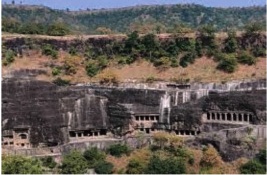
✶ During the Gupta period (5th and 6th centuries A.D.)
✶ Paintings and sculptures masterpieces of Buddhist religious art.
2. Taj Mahal (1983):
✶ Uttar Pradesh
✶ Built in Agra between 1631 and 1648 by order of the Mughal emperor Shah Jahan
3. Ellora Caves (1983):
✶ Maharashtra
✶ Devoted to Buddhism, Hinduism and Jainism
✶ Dating from A.D. 600 to 1000

4. Agra Fort (1983):
✶ Uttar Pradesh
✶ 16th-century Mughal monument
✶ Jahangir Palace and the Khas Mahal, built by Shah Jahan
✶ Audience halls, such as the Diwan-i-Khas etc
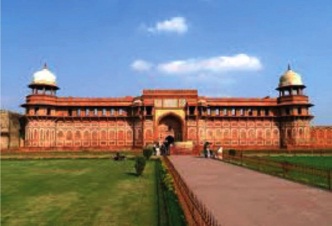
5. Sun Temple, Konark (1984):
✶ Orissa
✶ Built in the 13th century
✶ Representation of the sun god Surya’s chariot
✶ Its 24 wheels are decorated with symbolic designs and it is led by a team of six horses.

6. Group of Monuments at Mahabalipuram (1984):
✶ Tamil Nadu
✶ Founded by the Pallava kings (7th and 8th centuries.)
✶ Known especially for its rathas (temples in the form of chariots), mandapas (cave sanctuaries)
7. Khajuraho Group of Monuments (1986):
✶ Madhya Pradesh
✶ Temples at Khajuraho were built during the Chandella dynasty
✶ Between 950 AD and 1050 AD

8. Group of Monuments at Hampi (1986):
✶ Karnataka
✶ Grandiose site of Hampi was the capital of the Kingdom of Vijayanagar.
✶ These Dravidian temples and palaces were built by rulers of Vijaynagar between the 14th and 16th centuries.
9. Fatehpur Sikri (1986):
✶ Uttar Pradesh
✶ 16th century by the Emperor Akbar.
✶ Fatehpur Sikri (the City of Victory)
✶ It contains an array of monuments including one of the largest mosques in India- the Jama Masjid.
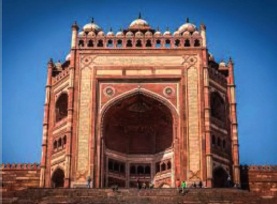
10. Churches and Convents of Goa (1986):
✶ Goa
✶ Particularly the Basilica of Bom Jesus indicate commencement of evangelization in Asia.
✶ The Basilica of Bom Jesus also houses the sacred tomb of St. Francis Xavier.

11. Elephanta Caves (1987):
✶ Located at Elephanta island or island of Gharapuri (literally- ‘City of Caves’) close to Mumbai.
✶ A collection of rock art connected to the Shaivite cult.
✶ Constructed around the mid-5th to 6th centuries AD.

12. Great Chola Temples (1987):
✶ Built by kings of the Chola empire
✶ It includes Brihadisvara Temple at Thanjavur, Brihadisvara Temple at Gangaikondacholisvaram and Airavatesvara Temple at Darasuram.

13. Group of Monuments at Pattadakal (1987):
✶ Karnataka
✶ Unique blend of architectural forms from northern and southern India.
✶ Under the Chalukya dynasty during the 7th and 8th centuries.
✶ It comprises nine Hindu temples as well as a Jain sanctuary including the Temple of Virupaksha.
14. Buddhist Monuments at Sanchi (1989):
✶ Madhya Pradesh
✶ Oldest Buddhist sanctuary in existence
✶ Until 12th century A.D. it is the major Buddhist centre in India.

15. Qutub Minar and it Monuments (1993):
✶ Delhi
✶ Red sandstone structure
✶ Other monuments include Alai Darwaza, Quwwat ul Islam mosque.

16. Humayun’s Tomb (1993):
✶ Delhi
✶ Built-in 1570
✶ The first garden-tomb to be constructed in India.

17. Darjeeling Himalayan Railway (1999):
✶ This site includes three railways
✶ Darjeeling Himalayan Railway
✶ Nilgiri Mountain Railway: (Started in 1891 and completed till 1908, is a 46-km long metre-gauge singletrack railway in Tamil Nadu.)
✶ Kalka Shimla Railway
18. Mahabodhi Temple Complex, Bodh Gaya (2002):
✶ Bihar
✶ Earlier built by Emperor Asoka in the 3rd century B.C.
✶ But the present structure dates back to the 5th or 6th centuries.
✶ One of the earliest Buddhist temples built entirely in brick

19. Rock Shelters of Bhimbetka (1993):
✶ Madhya Pradesh
✶ Located within the foothills of Vindhya range
✶ Paintings that date back to the Mesolithic, and other periods succeeding it.
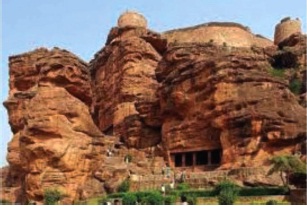
20. Chhatrapati Shivaji Terminus or Victoria Terminus, Mumbai (2004):
✶ Designed by the British architect F. W. Stevens
✶ It became symbol of Bombay as the ‘Gothic City’.
21. Champaner-Pavagadh Archaeological Park:
✶ Gujarat
✶ Includes prehistoric (chalcolithic) sites
✶ It includes, among other vestiges, fortifications, palaces, religious buildings, residential precincts, agricultural structures and water installations, from the 8th to 14th centuries.
✶ The Kalikamata Temple on top of Pavagadh Hill is considered to be an important shrine.
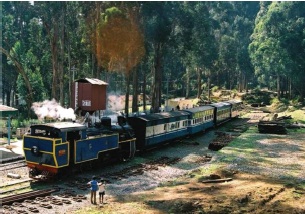
22. Nilgiri Mountain Railways (2005)
23. Red Fort Complex (2007):
✶ Delhi
✶ This was built as the palace fort of Shahjahanabad, the capital of Mughal Emperor Shah Jahan
✶ It is named after its immense walls of red sandstone.
✶ Red Fort is a reflection of the acme of Mughal architectural innovation and craftsmanship.
✶ The row of pavilions are connected by a continuous water channel known as Nahr-i-Behisht (Stream of Paradise).

24. Kalka-Shimla Railway (2008)
✶ Himachal Pradesh
25. Jantar Mantar, Jaipur (2010):
❖ Rajasthan
❖ It is an astronomical observation site built in the early 18th century. It includes a set of some 20 main fixed instruments.
❖ An expression of the astronomical skills and cosmological concepts.

26. Hill forts of Rajasthan (2013):
❖ Rajasthan
❖ Includes six majestic forts in Chittorgarh; Kumbhalgarh; Sawai Madhopur; Jhalawar; Jaipur, and Jaisalmer.
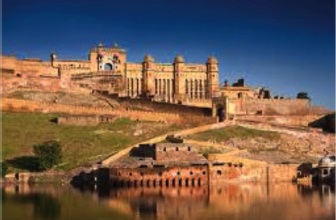
27. Rani Ki Vav, The Queen’s Stepwell (2014):
❖ Gujarat
❖ Situated on the banks of Saraswati river
❖ Step well flaunts the Maru-Gurjara architectural style
❖ Designed in the form of an inverted temple

28. Archeological Site of Nalanda Mahavihara (Nalanda University) 2016:
❖ Bihar
❖ Remains of a monastic and scholastic institution dating from the 3rd century BCE to the 13th century CE.
❖ Includes stupas, shrines, viharas
❖ Most ancient university of the Indian Subcontinent.
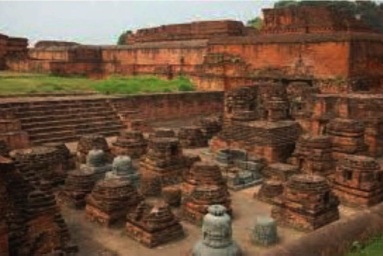
29. The Architectural Work of Le Corbusier (2016):
❖ Includes 17 sites spread across 7 countries stands as a testimony of a new form of architectural expression
❖ These sites, in totality, propagate ideals of the Modern movement
❖ They considered as a significant response to fundamental issues of architecture and society in the 20th century.
❖ Complexe du Capitole, Chandigarh, The Museum of Western Art in Tokyo (Japan), the House of Dr Curutchet in La Plata (Argentina), Unitéd’habitation in Marseille (France) etc, are some of the well-known sites included in this property.

30. Historic City of Ahmedabad (2017):
✪ Located on the bank of Sabarmati
✪ Founded by Sultan Ahmad Shah in the 15th century.
✪ Harmonious existence of diverse religions
✪ It includes the famous Bhadra citadel accompanied by various mosques, tombs as well as numerous Hindu and Jain temples.

32. Jaipur City (2020):
✪ Rajasthan
✪ Founded in 1727 by Sawai Jai Singh II.

Dholavira:
✪ Gujarat
✪ ancient city of Dholavira, the southern centre of the Harappan Civilization
✪ Best preserved urban settlements
Kakatiya Rudreshwara (Ramappa) Temple:
✪ Telangana
✪ Rudreshwara, popularly known as Ramappa Temple
✪ Shiva temple
✪ Built during the Kakatiyan period (1123–1323 CE) under rulers Rudradeva and Recharla Rudra.

1. Manas Wildlife Sanctuary (1985):
✦ Assam
✦ Manas Wildlife Sanctuary is a biodiversity hotspot
✦ Forested hills, alluvial grasslands and tropical evergreen forests
✦ Provides a habitable environment to a range of endangered species such as- tiger, greater onehorned rhino, swamp deer, pygmy hog and Bengal florican.
2. Kaziranga National Park (1985):
✦ Assam
✦ Inhabited by the world’s largest population of onehorned rhinoceroses
3. Keoladeo National Park, Bharatpur (1985):
✦ Rajasthan
✦ It served as a duck shooting reserve till the end of 19th century.
✦ In 1982, it was declared as national park
✦ It serves as a wintering ground to Palaearctic migratory waterfowl, critically endangered Siberian Crane as well as to globally threatened-Greater Spotted Eagle and Imperial Eagle.

4. Sundarban National Park (1987):
✦ West Bengal
✦ Ganges delta
✦ World’s largest area of mangrove forests
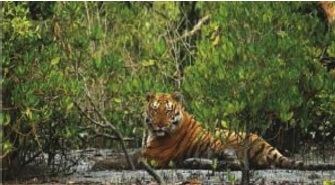
5. Nanda Devi National Park (1998) and Valley of Flowers (2005):
✦ Uttarakhand
✦ Himalayan landscapes and fall within the boundaries of the state of Uttarakhand.
✦ Nanda Devi National Park boasts rugged and high-mountain wilderness and is dominated by India’s second-highest mountain-the peak of Nanda Devi.
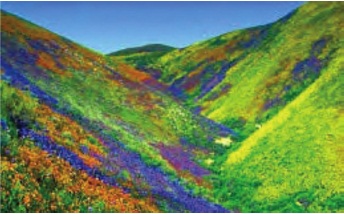
6. Western Ghats (2012):
✦ Western Ghats consist of a chain of mountains
✦ Passing from the states of Kerala, Maharashtra, Goa, Gujarat, Tamil Nadu and Karnataka.
✦ It is recognized as one of the world’s eight ‘hottest hotspots’ of biological diversity.
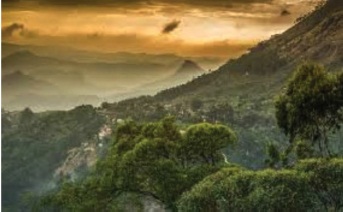
7. Great Himalayan National Park (2014):
✦ Characterized by high alpine peaks, alpine meadows and riverine forests.
✦ Encloses glacial and snow meltwater sources of several rivers as well as the catchment area.
✦ It is a biodiversity hotspot with 25 types of forests.

1. Khangchendzonga National Park (2016):
✸ Sikkim
✸ National Park is dominated by the world's thirdhighest peak, Mount Khangchendzonga.
✸ Steep-sided valleys, snowclad mountains and various lakes and glaciers
✸ It is home to a sacred site of one of the world's leading religious traditions.
✸ Unique example of co-existence and exchange between different religious traditions and people.
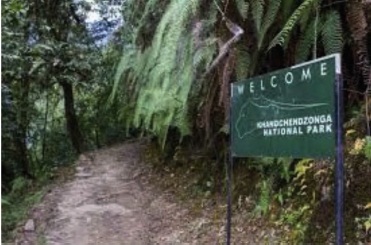
Benefits of the World Heritage Site Status:
✸ Brings international attention
✸ Site becomes protected under the Geneva Convention against destruction or misuse during wartime.
✸ Promotes close ties with the United Nations and provides with prestige and support.
✸ If required, UNESCO provides funds for restoration, preservation, and training.
✸ Brings tourism to the site ensuring economic benefits.
Posted Date: 10/03/2022